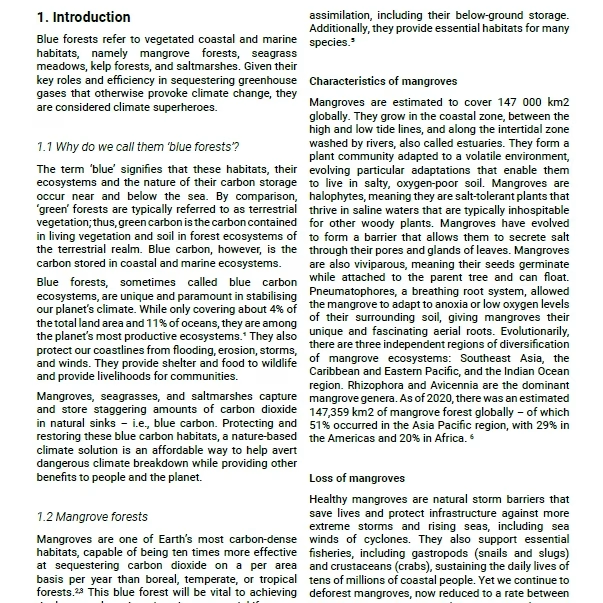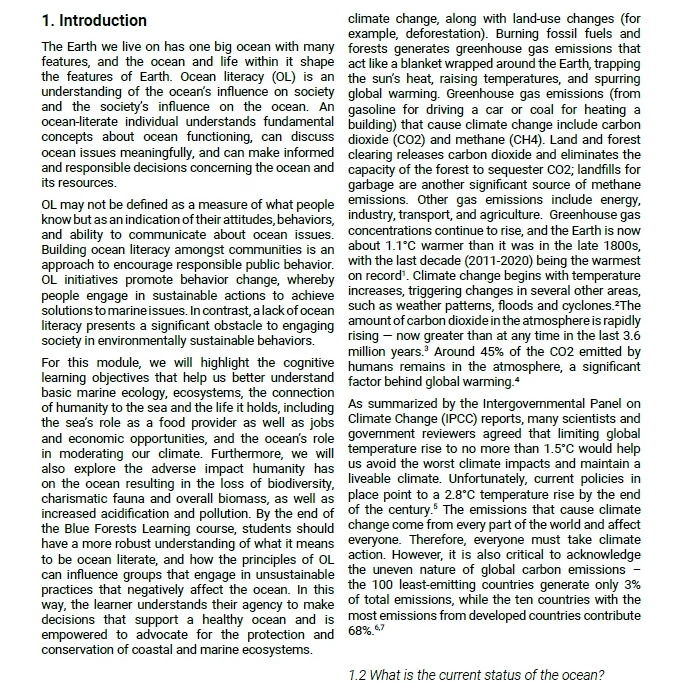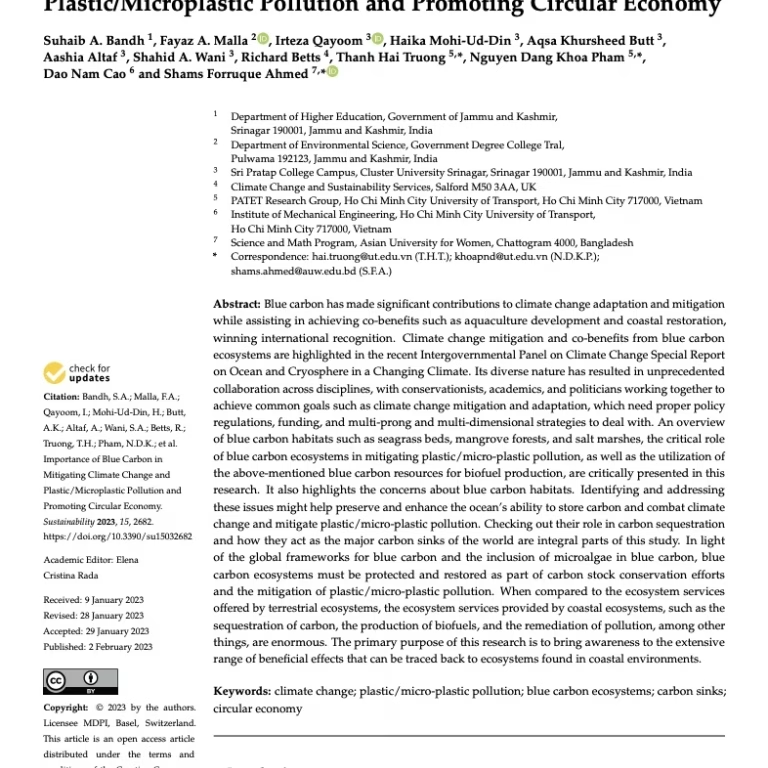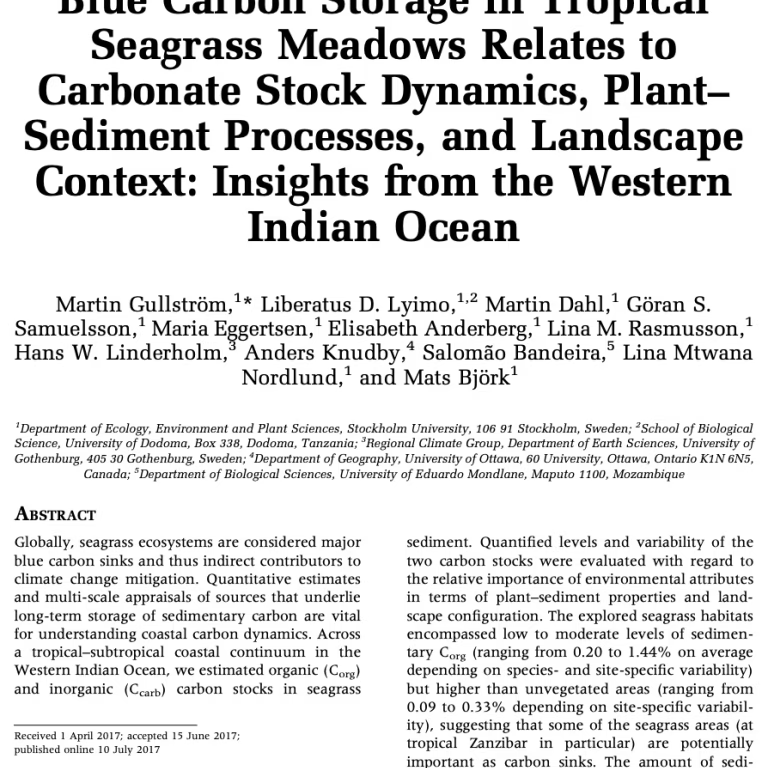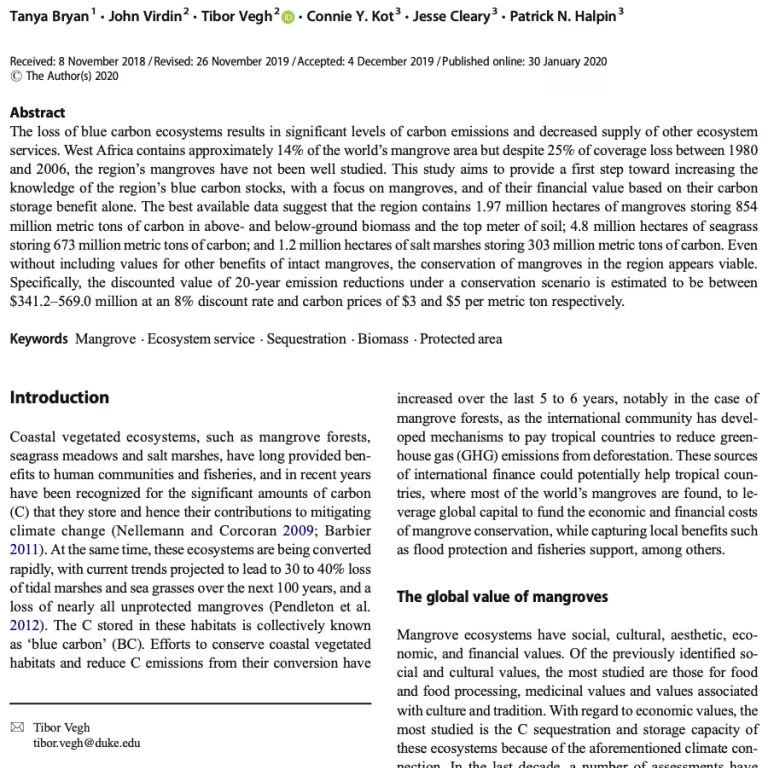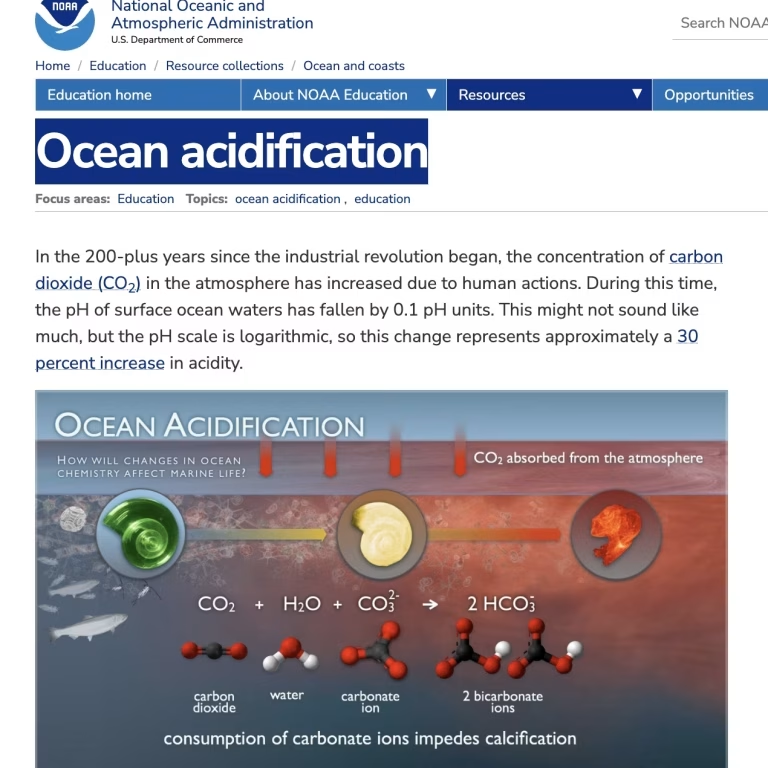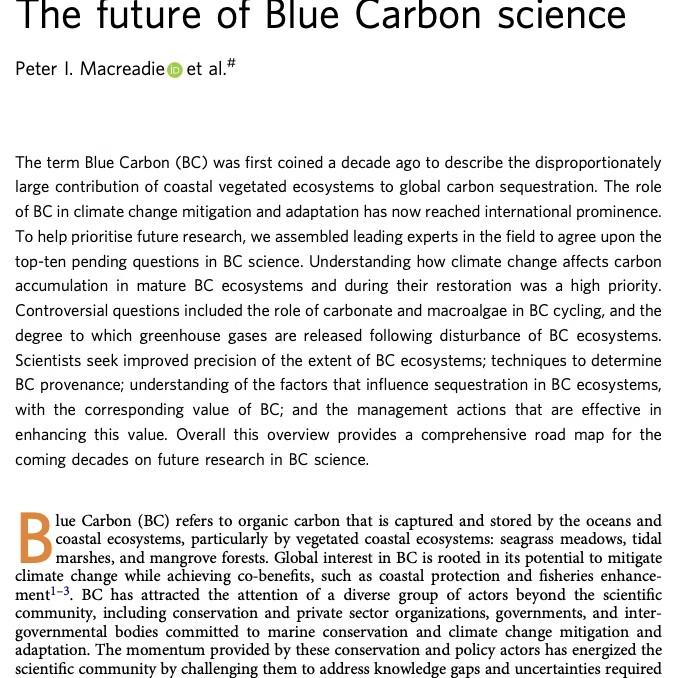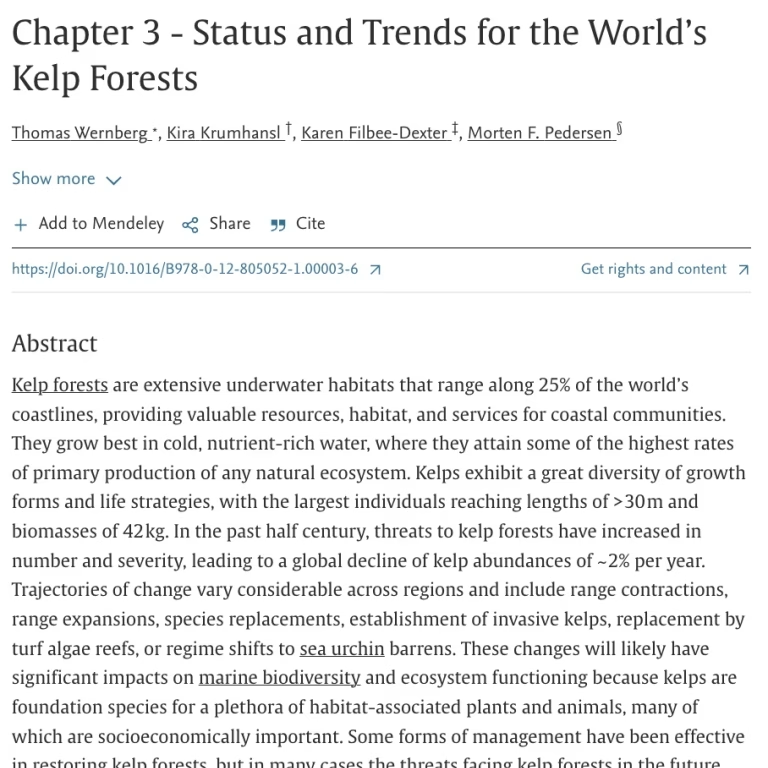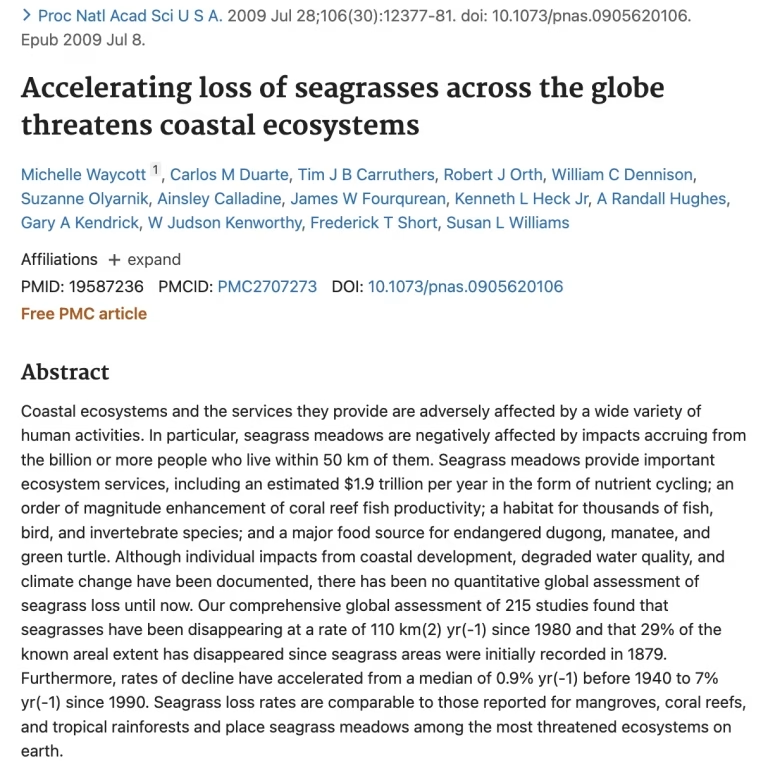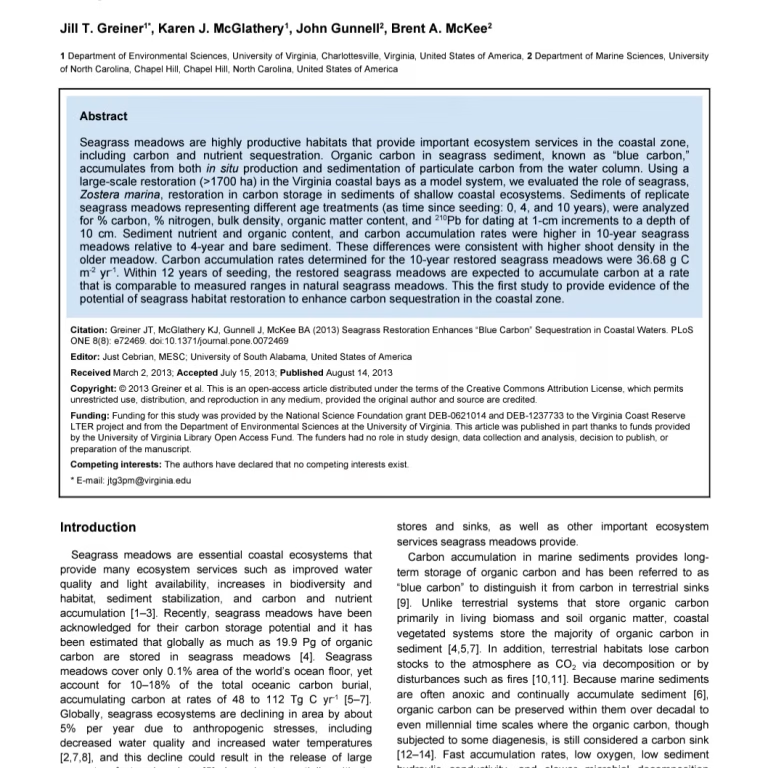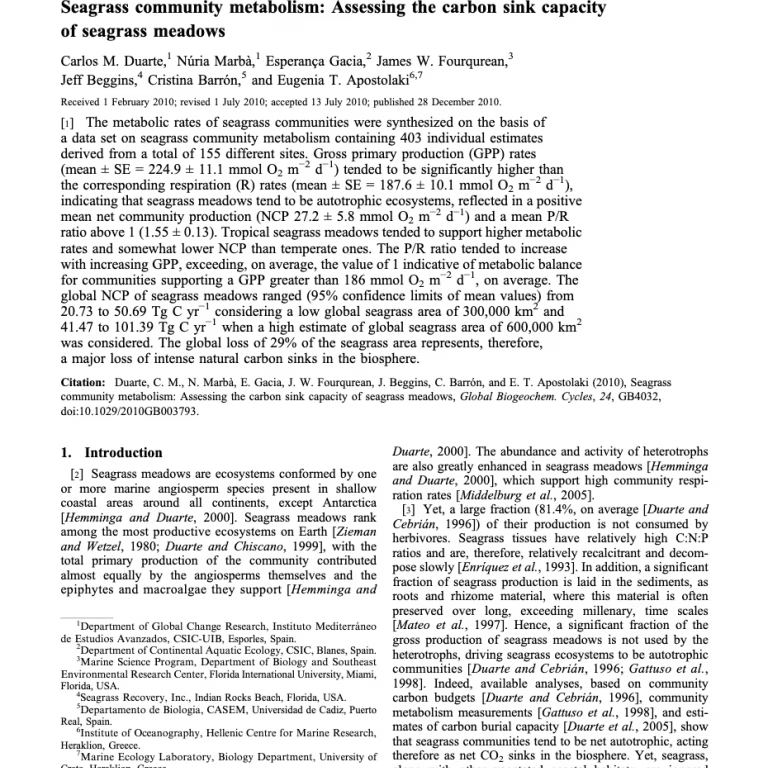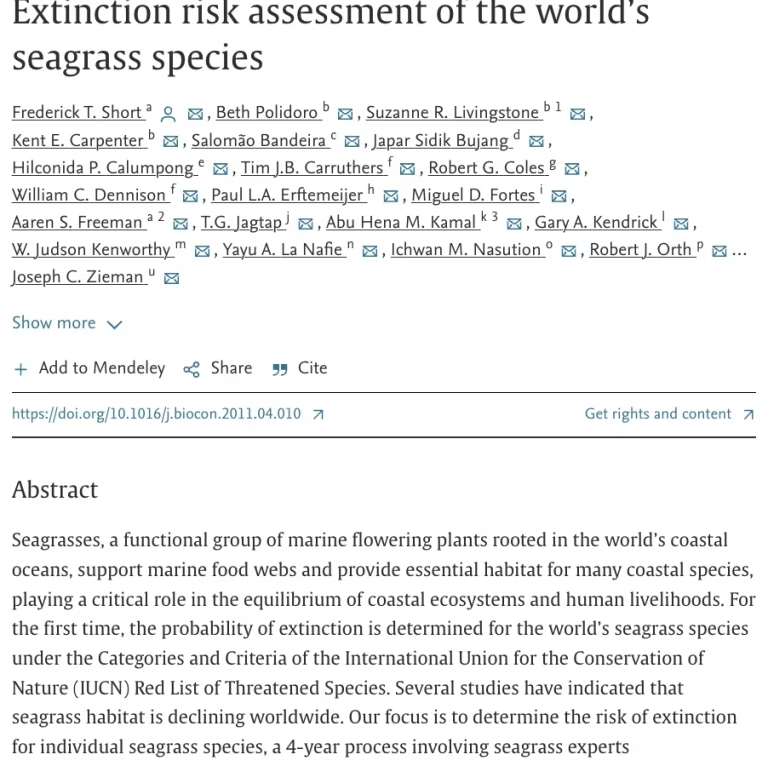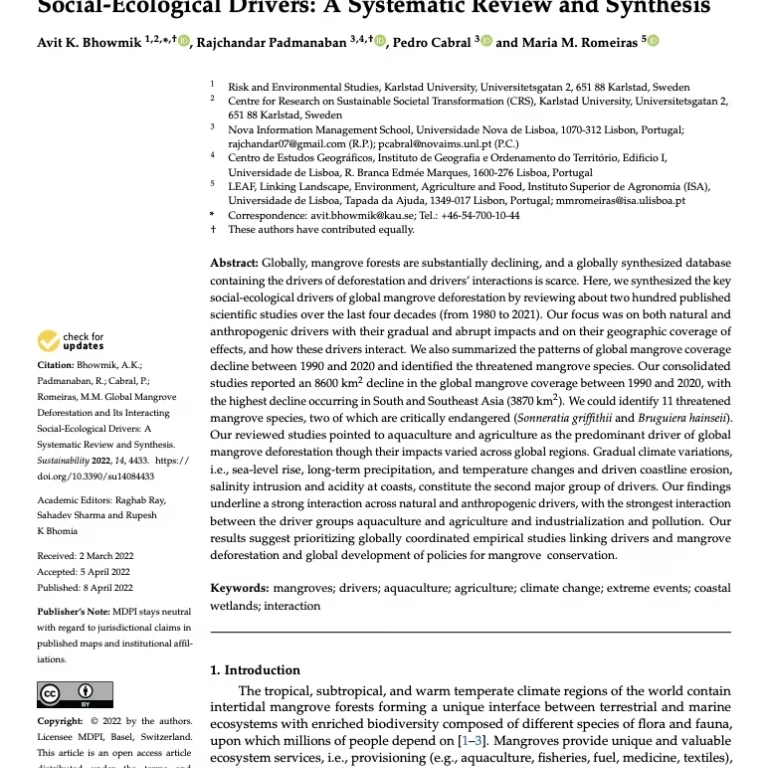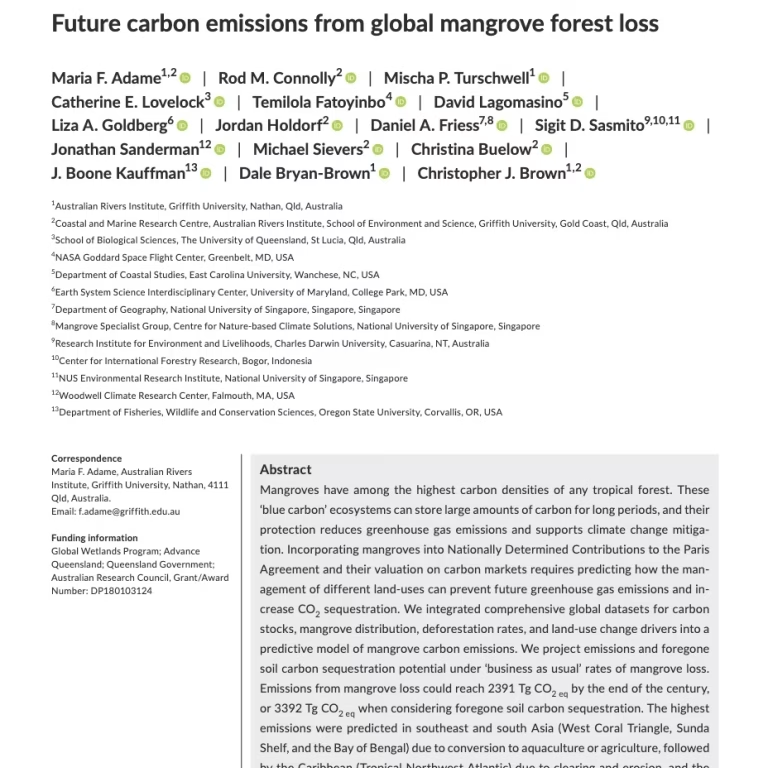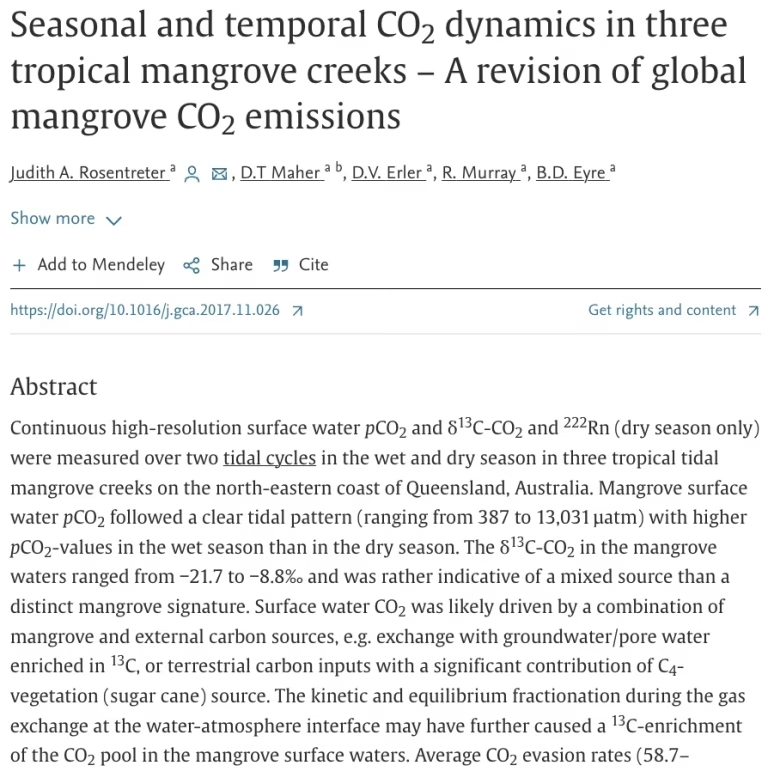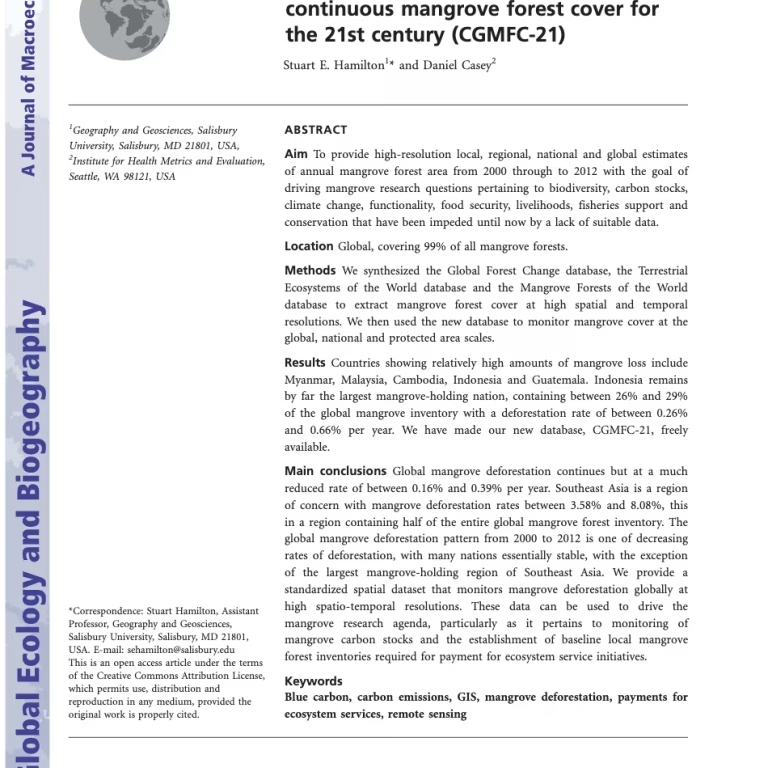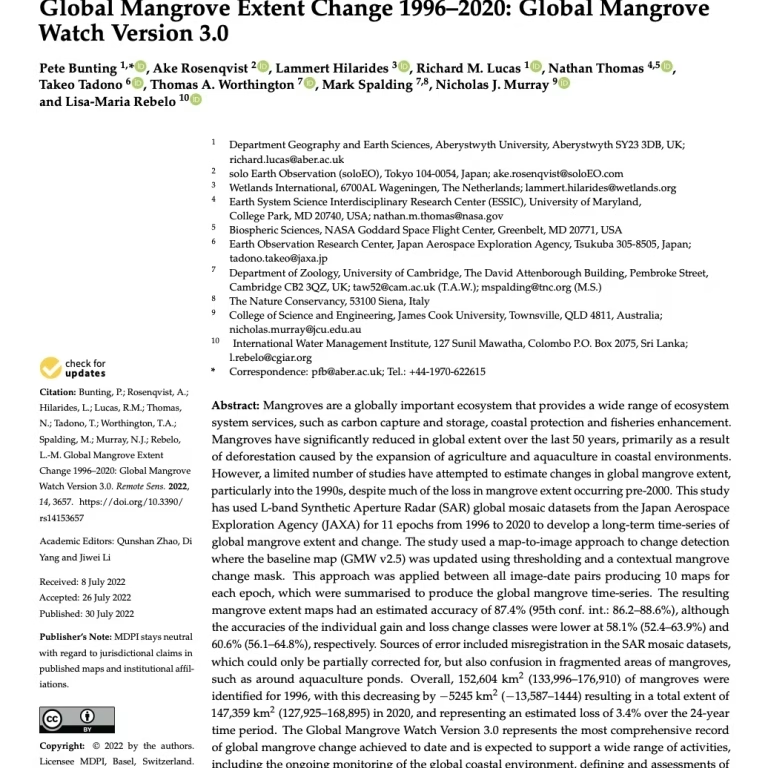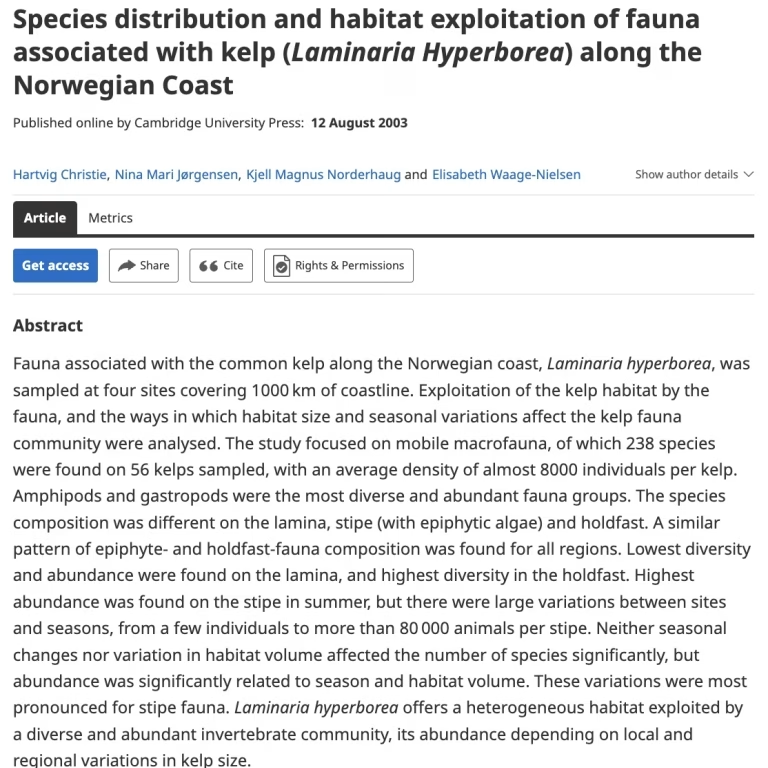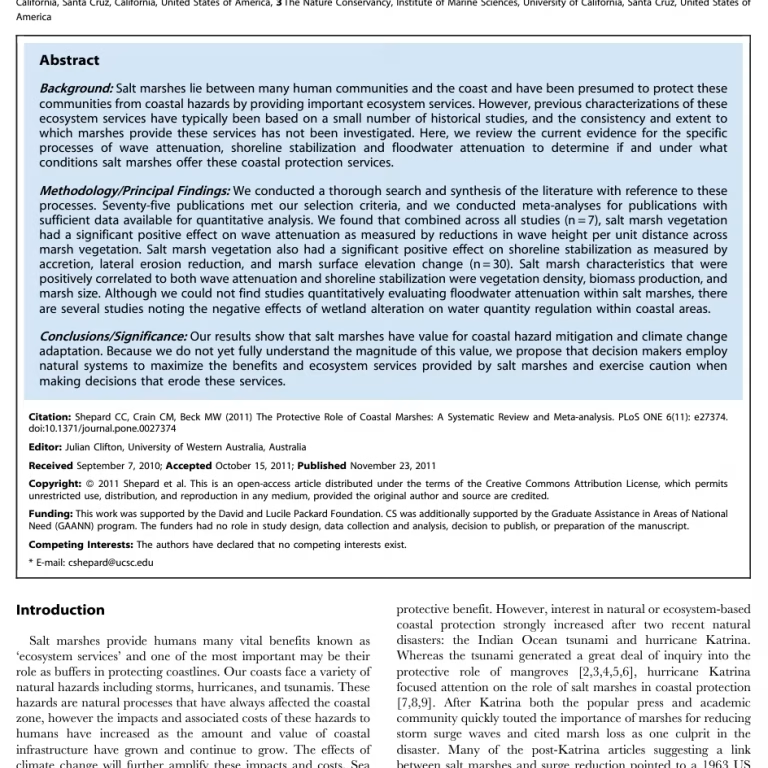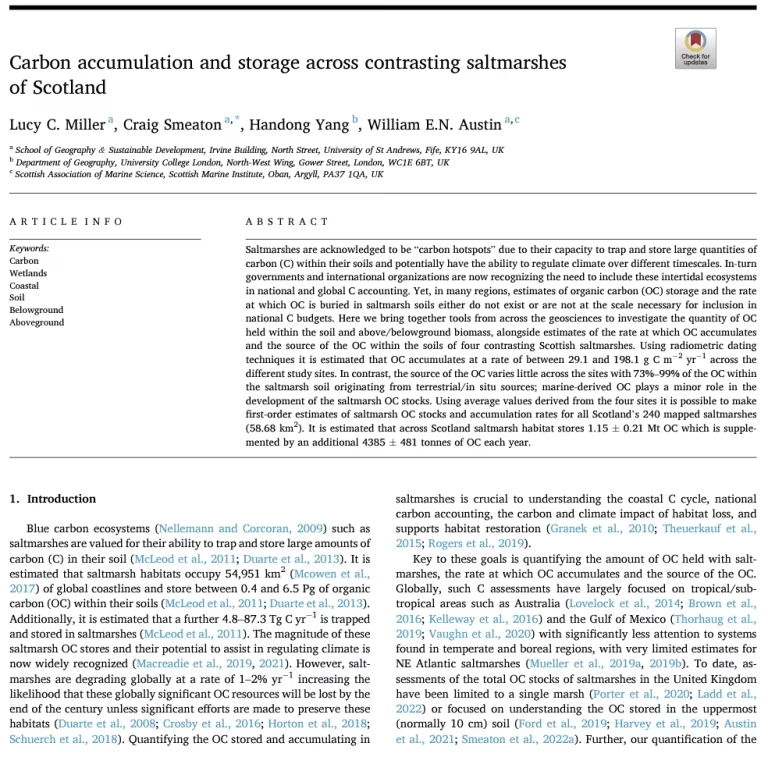Resource Library
- All
- Further Reading
- Infographic
- Map
- Online Article
- Online Exercise
- Photo
- Report
- Scientific Article
- Story Map
- Teaching Material
- Tools
- Video
- Website
Importance of Blue Carbon in Mitigating Climate Change and Plastic/Microplastic Pollution and Promoting Circular Economy
Blue carbon has made significant contributions to climate change adaptation and mitigation while assisting in achieving co-benefits such as aquaculture development and coastal restoration, winning international recognition. Climate change mitigation and co-benefits from blue carbon ecosystems are highlighted in the recent Intergovernmental Panel on Climate Change Special Report on Ocean and Cryosphere in a Changing…
Blue Carbon Storage in Tropical Seagrass Meadows Relates to Carbonate Stock Dynamics, Plant–Sediment Processes, and Landscape Context: Insights from the Western Indian Ocean
Globally, seagrass ecosystems are considered major blue carbon sinks and thus indirect contributors to climate change mitigation. Quantitative estimates and multi-scale appraisals of sources that underlie long-term storage of sedimentary carbon are vital for understanding coastal carbon dynamics. Across a tropical–subtropical coastal continuum in the Western Indian Ocean, authors estimated organic (Corg) and inorganic (Ccarb)…
Blue Carbon Conservation in West Africa: A first assessment of feasibility
The loss of blue carbon ecosystems results in significant levels of carbon emissions and decreased supply of other ecosystem services. West Africa contains approximately 14% of the world’s mangrove area but despite 25% of coverage loss between 1980 and 2006, the region’s mangroves have not been well studied. This study aims to provide a first…
Ocean Acidification
The ocean absorbs about 30% of the carbon dioxide (CO2) that is released in the atmosphere. As levels of atmospheric CO2 increase from human activity such as burning fossil fuels (e.g., car emissions) and changing land use (e.g., deforestation), the amount of carbon dioxide absorbed by the ocean also increases. When CO2 is absorbed by…
The Future of Blue Carbon Science
The term Blue Carbon (BC) was first coined a decade ago to describe the disproportionately large contribution of coastal vegetated ecosystems to global carbon sequestration. The role of BC in climate change mitigation and adaptation has now reached international prominence. To help prioritise future research, we assembled leading experts in the field to agree upon…
Status and Trends for the World’s Kelp Forests
Kelp forests are extensive underwater habitats that range along 25% of the world’s coastlines, providing valuable resources, habitat, and services for coastal communities. They grow best in cold, nutrient-rich water, where they attain some of the highest rates of primary production of any natural ecosystem. Kelps exhibit a great diversity of growth forms and life…
Accelerating Loss of Seagrasses Across the Globe Threatens Coastal Ecosystems
Coastal ecosystems and the services they provide are adversely affected by a wide variety of human activities. In particular, seagrass meadows are negatively affected by impacts accruing from the billion or more people who live within 50 km of them. Seagrass meadows provide important ecosystem services, including an estimated $1.9 trillion per year in the…
Seagrass Restoration Enhances “Blue Carbon” Sequestration in Coastal Waters
Seagrass meadows are highly productive habitats that provide important ecosystem services in the coastal zone, including carbon and nutrient sequestration. Organic carbon in seagrass sediment, known as “blue carbon,” accumulates from both in situ production and sedimentation of particulate carbon from the water column. Using a large-scale restoration (>1700 ha) in the Virginia coastal bays…
Seagrass Community Metabolism: Assessing the carbon sink capacity of seagrass meadows
The metabolic rates of seagrass communities were synthesized on the basis of a data set on seagrass community metabolism containing 403 individual estimates derived from a total of 155 different sites. Gross primary production (GPP) rates (mean ± SE = 224.9 ± 11.1 mmol O2 m−2 d−1) tended to be significantly higher than the corresponding…
Extinction Risk Assessment of the World’s Seagrass Species
Seagrasses, a functional group of marine flowering plants rooted in the world’s coastal oceans, support marine food webs and provide essential habitat for many coastal species, playing a critical role in the equilibrium of coastal ecosystems and human livelihoods. For the first time, the probability of extinction is determined for the world’s seagrass species under…
Global Mangrove Deforestation and Its Interacting Social-Ecological Drivers: A Systematic Review and Synthesis
Globally, mangrove forests are substantially declining, and a globally synthesized database containing the drivers of deforestation and drivers’ interactions is scarce. Here, we synthesized the key social-ecological drivers of global mangrove deforestation by reviewing about two hundred published scientific studies over the last four decades (from 1980 to 2021). Our focus was on both natural…
Future Carbon Emissions from Global Mangrove Forest Loss
Mangroves have among the highest carbon densities of any tropical forest. These ‘blue carbon’ ecosystems can store large amounts of carbon for long periods, and their protection reduces greenhouse gas emissions and supports climate change mitigation. Incorporating mangroves into Nationally Determined Contributions to the Paris Agreement and their valuation on carbon markets requires predicting how…
Seasonal and Temporal CO2 Dynamics in Three Tropical Mangrove Creeks: A revision of global mangrove CO2 emissions
Continuous high-resolution surface water pCO2 and δ13C-CO2 and 222Rn (dry season only) were measured over two tidal cycles in the wet and dry season in three tropical tidal mangrove creeks on the north-eastern coast of Queensland, Australia. Mangrove surface water pCO2 followed a clear tidal pattern (ranging from 387 to 13,031 µatm) with higher pCO2-values in…
Creation of a High Spatio-temporal Resolution Global Database of Continuous Mangrove Forest Cover for the 21st Century
Global mangrove deforestation continues but at a much reduced rate of between 0.16% and 0.39% per year. Southeast Asia is a region of concern with mangrove deforestation rates between 3.58% and 8.08%, this in a region containing half of the entire global mangrove forest inventory. The global mangrove deforestation pattern from 2000 to 2012 is…
Global Mangrove Extent Change 1996–2020: Global Mangrove Watch Version 3.0
Mangroves are a globally important ecosystem that provides a wide range of ecosystem system services, such as carbon capture and storage, coastal protection and fisheries enhancement. Mangroves have significantly reduced in global extent over the last 50 years, primarily as a result of deforestation caused by the expansion of agriculture and aquaculture in coastal environments.…
Species Distribution and Habitat Exploitation of Fauna Associated with Kelp (Laminaria Hyperborea) Along the Norwegian Coast
Fauna associated with the common kelp along the Norwegian coast, Laminaria hyperborea, was sampled at four sites covering 1000 km of coastline. Exploitation of the kelp habitat by the fauna, and the ways in which habitat size and seasonal variations affect the kelp fauna community were analysed. The study focused on mobile macrofauna, of which 238…
The Protective Role of Coastal Marshes: A Systematic Review and Meta-analysis
Saltmarshes lie between many human communities and the coast and have been presumed to protect these communities from coastal hazards by providing important ecosystem services. However, previous characterizations of these ecosystem services have typically been based on a small number of historical studies, and the consistency and extent to which marshes provide these services has…
Carbon Accumulation and Storage Across Contrasting Saltmarshes of Scotland
Saltmarshes are acknowledged to be “carbon hotspots” due to their capacity to trap and store large quantities of carbon (C) within their soils and potentially have the ability to regulate climate over different timescales. In-turn governments and international organizations are now recognizing the need to include these intertidal ecosystems in national and global C accounting.…

